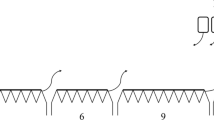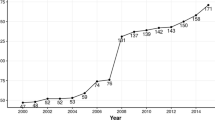Abstract
Pesticide application is an essential practice on many U.S. crop farms. Off-rate pesticide application errors may result from velocity differential across the spray boom while turning, pressure fluctuations across the spray boom, or changes in boom-to-canopy height due to undulating terrain. The sprayer path co-ordinates and the status (on or off) of each boom control section were recorded using the sprayer control console which provided map-based automatic boom section control. These data were collected for ten fields of varying shapes and sizes located in central Kentucky. In order to estimate potential errors resulting from sprayer turning movements, a method was developed to compare the differences in application areas between spray boom control sections. The area covered by the center boom control section was considered the “target rate area” and the difference in these areas and the areas covered by remaining control sections were compared to estimate application rate errors. The results of this analysis conducted with sprayer application files collected from ten fields, many containing impassable grassed waterways, indicated that a substantial portion of the fields (6.5–23.8%) could have received application in error by more than ±10% of the target rate. Off-rate application errors exceeding ±10% of the target rate for the study fields tended to increase as the average turning angles increased. The implication of this is that producers may be unintentionally applying at off-label rates in fields of varying shapes and sizes where turning movements are required.






Similar content being viewed by others
References
Bode, L. E., & Butler, B. J. (1983). Spray characteristics of rotary atomizers. In K. G. Seymour (Ed.), Proceedings of the pesticide formulations and application systems second conference (pp. 89–104). ASTM TP 795. Philadelphia, PA: American Society for Testing Materials.
Bonny, S. (2008). Genetically modified glyphosate-tolerant soybean in the USA: Adoption factors, impacts and prospects. Agronomy for Sustainable Development, 28, 21–32.
Cox, W. J., Hahn, R. R., & Stachowski, P. J. (2006). Time of weed removal with glyphosate affects corn growth and yield components. Agronomy Journal, 98(2), 349–353.
Faechner, T., Norrena, K., Thomas, A. G., & Deutsch, C. V. (2002). A risk-qualified approach to calculate locally varying herbicide application rates. Weed Research, 42(6), 476–485.
Fulton, J. P., Shearer, S. A., Stombaugh, T. S., Higgins, S. F., & Dillon, C. R. (2003). ‘As-applied’ model validation for variable-rate application of granular materials. In P. C. Rober, R. H. Rust, W. E. Larson (Eds.), Proceedings of the 6th international conference on precision agriculture and other precision resources management. Madison, WI, USA: ASA-CSSA-SSSA. CD-ROM.
Gibson, C. (2004). Full season soybean enterprise 1999–2003. University of Kentucky College of Agriculture. http://www.uky.edu/Ag/AgEcon/pubs/ext_other/kfbm_soybean99-03.pdf. Accessed 26 Jul 2010.
Giles, D. K., & Downey, D. (2003). Quality control verification and mapping for chemical application. Precision Agriculture, 4, 103–124.
Lawrence, H. G., & Yule, I. J. (2007). Modeling of fertilizer distribution using measured machine parameters. Transactions of the ASABE, 50(4), 1141–1147.
Luck, J. D., Pitla, S. K., Shearer, S. A., Mueller, T. G., Dillon, C. R., Fulton, J. P., et al. (2010a). Potential for pesticide and nutrient savings via map-based automatic boom section control of spray nozzles. Computers and Electronics in Agriculture, 70(1), 19–26.
Luck, J. D., Zandonadi, R. S., Luck, B. D., & Shearer, S. A. (2010b). Reducing pesticide over-application with map-based automatic boom section control on agricultural sprayers. Transactions of the ASABE, 53(3), 685–690.
Reddy, K. N., & Zablotowicz, R. M. (2003). Glyphosate-resistant soybean response to various salts of glyphosate and glyphosate accumulation in soybean nodules. Weed Science, 51, 496–502.
Reddy, K. N., Hoagland, R. E., & Zablotowicz, R. M. (2000). Effect of glyphosate on growth, chlorophyll, and nodulation in glyphosate-resistant and susceptible soybean (Glycine max) varieties. Journal of New Seeds, 2, 37–52.
Shafagh-Kolvanagh, J., Zehtab-Salmasi, S., Javanshir, A., Moghaddam, M., & Nasab, A. D. M. (2008). Effects of nitrogen and duration of weed interference on grain yield and SPAD (chlorophyll) value of soybean (Glycine max (L.) Merril.). Journal of Food Agriculture and the Environment, 6(3–4), 368–373.
Wilkerson, G. G., Price, A. J., Bennett, A. C., Krueger, D. W., Roberson, G. T., & Robinson, B. L. (2004). Evaluating the potential for site-specific herbicide application in soybean. Weed Technology, 18(4), 1101–1110.
Acknowledgments
The authors would like to express their appreciation to Mike Ellis, Bob Ellis, Jim Ellis, and Matt McClure of Worth and Dee Ellis Farm for their cooperation on this research project. This material is based upon work supported by the Cooperative State Research, Education and Extension Service, U.S. Department of Agriculture, under Agreement no. 2008-34628-19532. Any opinions, findings, conclusions, or recommendations expressed in this publication are those of the author(s) and do not necessarily reflect the view of the U.S. Department of Agriculture. The information reported in this paper (no. 10-05-045) is part of a project of the Kentucky Agricultural Experiment Station and is published with the approval of the Director. Mention of trade names is for informational purposes only and does not necessarily imply endorsement by the Kentucky Agricultural Experiment Station.
Author information
Authors and Affiliations
Corresponding author
Rights and permissions
About this article
Cite this article
Luck, J.D., Pitla, S.K., Zandonadi, R.S. et al. Estimating off-rate pesticide application errors resulting from agricultural sprayer turning movements. Precision Agric 12, 534–545 (2011). https://doi.org/10.1007/s11119-010-9199-9
Published:
Issue Date:
DOI: https://doi.org/10.1007/s11119-010-9199-9




